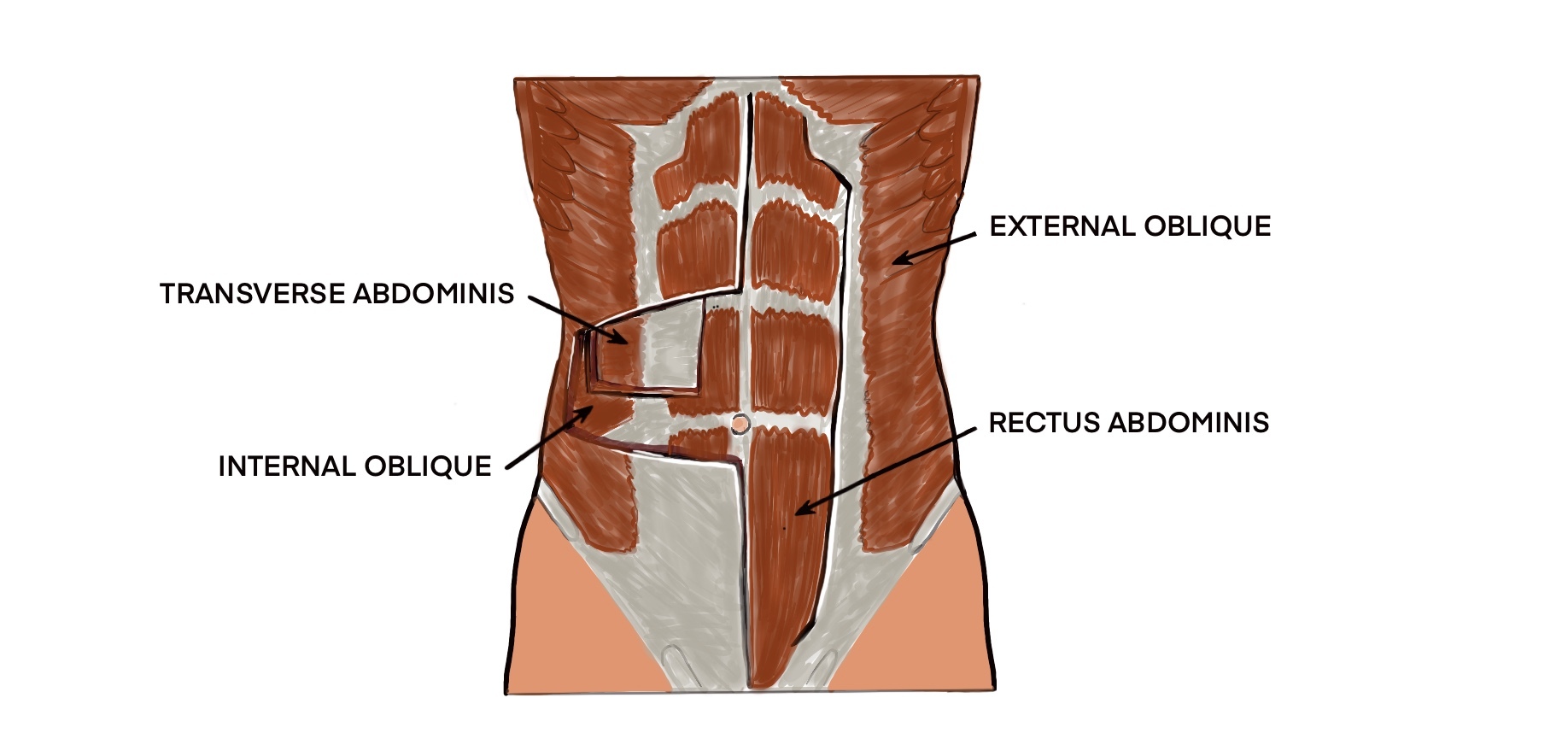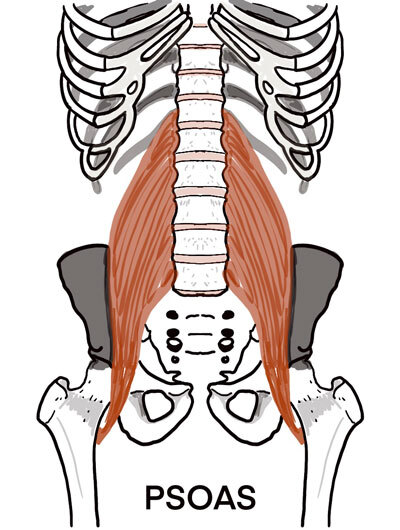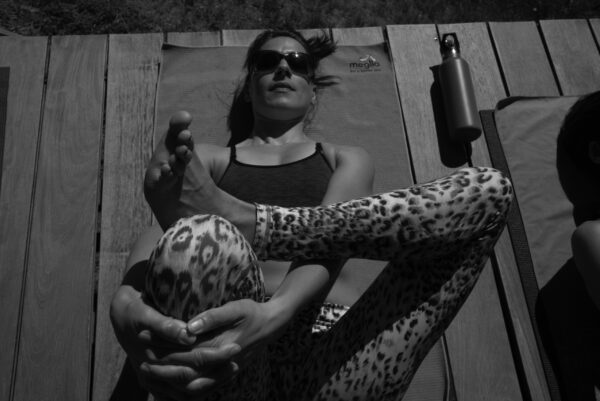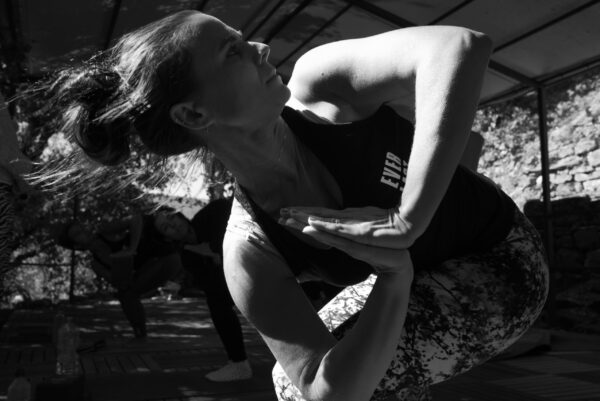What it is, why you need it, and how to keep it healthy and strong
Contrary to popular belief, our functional core is actually much more complex than our six pack or “abs.” Whether or not your abdominals are super defined says nothing about how strong your core truly is.
Your abdominal muscles alone are actually not your core. Your “functional core” or “true core” as we call it in our workshop of the same name is actually made up of all the muscles which stabilise your spine – often referred to as “core stabilisers.” This can include up to 40 different muscles.
We are all aware of the most “famous” abdominal muscles - Rectus Abdominus that creates the “six-pack.” We tend to overwork these as they look good. This can result in many people who have visibly-defined abdominals, but weak cores.
Your four sets of abdominal muscles:
- Rectus abdominus
- Internal obliques
- External obliques
- Transverse Abdominus
Your core stabilisers:
- The multi layered muscles of your spine
- Pelvic floor musculature
- The back muscles
- Psoas (an important muscle you have probably heard a lot about which deserves a whole blog pose of its own)
- The muscles that stabilise your shoulder blades
- The respiratory diaphragm
Together your core stabilisers and your abdominals constitute the core muscles.
The risks of over strengthening your abdominals and neglecting the core stabilisers
Imagine a macrame (string) plant holder holding a potted plant hanging from the ceiling.
If you lengthen some strings while tightening others the plant pot is pulled at different angles, over-straining some strings and loosening others. It’s a simplistic but helpful analogy for how the muscles of the core affect each other and the pelvis.
If the abdominal muscles are over strengthened (or tightened in our macrame metaphor) but the back muscles are weak (or loosened) the body can be pulled forward and down making the spine and back vulnerable. This leads to a “tucked under” pelvis which puts the lower back at risk by disturbing its natural arch. If the opposite happens and your abdominal muscles are too weak, this creates a “tipped forward” pelvis, which compresses the lower back and can wear the discs or compress nerves.
If both abdominals and back muscles are weak, the spine is left with no support. This means other issues can wreak havoc on your body. For instance without the stabilisation of the abdominals and back muscles tight hamstrings are now free to pull the pelvis into a posterior tilt, or tight psoas muscles can pull the spine out of alignment creating more issues.
The solution? Aim for unison, not isolation
A fully rounded movement practice consisting of twists, backbends, forward bends, lateral bends, strength poses as well as targeted abdominal exercises and stretches is the smart choice. Working the muscles in unison rather than picking and choosing certain sets of muscles alone, is the key to and healthy "true core."
This approach will improve core stability and posture, safeguard your lower back, and help you avoid pain in the back, hips, groin and sacrum, whilst reaping rewards visually too by slimming your waistline all the way around.
If you haven’t been taking this approach to your core then you might find yourself with pain or dysfunction. Below is a list of some of the common issues you might find yourself working with if you’ve over strengthened or neglected a particular part of your “true core”, and some potential fixes.
YOUR MAIN CORE MUSCLES – WHAT THEY DO, TROUBLESHOOTING AND POSES TO SUPPORT

1. Rectus Abdominus (RA)
The outermost layer AKA the six-pack muscle. Runs vertically along the front of the abdomen. RA regulates the tilt of the pelvis through attachment to the pelvic bone. When it contracts it pulls the rib cage and pelvis toward each other, usually resulting in a rounded spine (spinal flexion) and/or a tucked pelvis (posterior tilt).
Common Issues: Over strengthening the RA without strengthening the back muscles can result in an imbalance that can cause lower back pain and other issues.
Also be aware of activating these muscles when you don’t need to in reclining abdominal crunches and leg lowering as it makes your stomach “puff upwards” relaxing the transverse abdominus muscles, arching your spine and leaving your lower back vulnerable.
Poses to strengthen the RA: Boat Pose (Navasana,) Crow, Crunches, Hip Lifts (Reverse Crunch,) Dolphin Plank
2. The Internal and External Obliques
Run diagonally across the abdomen and are the muscles that rotate the torso. They start at the front side ribs and cross over to connect with the pelvis. The Obliques are part of the outermost layer.
The prime function of the external obliques is to twist the spine to the opposite side (as in Bicycle Crunch or Cross Cross). The internal obliques flex and rotate the trunk to the same aide (Side Plank, Half Moon.)
The obliques have a protective function to ensure a twist is distributed evenly at each vertebra so that the vertebrae do not turn too strongly in any one place, potentially injuring intervertebral discs. They also promote stability and balance.
Common Issues: Weak obliques can affect your balance and make you feel wobbly. Weak obliques allow your hip flexors to overcompensate and this can over arch your lower back potentially causing pain or disc issues.
If you feel your obliques might be weak incorporate plenty of these yoga poses in your practice: Half Moon (standing side bend), Criss Cross, Thread The Needle, Side Plank.
3. The Transverse Abdominus (TVA)
Our deepest abdominals of all. Begins near the spine and wraps all the way through to the front. It connects with pelvic floor muscles and the diaphragm to brace the spine in preparation for heavy loads. When they contract it has a corset-like effect of compressing the entire abdomen inwards.
The spinal support it provides is so crucial that without it, the nervous system cannot properly recruit muscles in the limbs, rendering functional movement at best inefficient and at worst impossible. Most people instinctively know how to use their TVA: It’s the action of sucking in the stomach and sides of the waist as if you were trying to zip up a tight pair of jeans.
Common Issues: Weak TVA muscles can cause the lower abdomen to bulge forward, leaving the lower back unsupported and over arched which can cause lower back pain.
If you wish to strengthen the TVA incorporate plenty of these yoga poses in your practice: Plank, Half Moon, Hollow Body Hold, Crunches, Reclining Leg Raises. Ensuring you pull your navel towards your spine.

4. Psoas
Your psoas attaches to the spinal vertebrae and stretches over the hip joint to attach at your femur (inner thigh.) It draws the thigh up towards the torso. You use the psoas when you walk: It initiates each step by exerting a pull on your leg at your inner thigh. It also works in concert with your abdominals to flex your spine in forward bends.
Common issues: As mentioned, the psoas needs a whole blog to itself as it plays a crucial role in the function of our core and pelvis. In short, a tight or overly strong psoas can cause serious postural problems, it can pull the lower back vertebrae forward and down toward the femur, often resulting in lordosis (overarching in the lumbar spine), which is a common cause of lower back pain and stiffness; it can also contribute to arthritis in the lumbar facet joints.
It is very difficult to avoid tightening the psoas in any abdominal exercise and this can be a problem unless you actively incorporate poses and techniques that release and lengthen your psoas.
On the opposite side of the spectrum, a weak and overstretched psoas can contribute to a common postural problem in which the pelvis is pushed forward of the chest and knees. This misalignment is characterised by tight hamstrings pulling down on the sitting bones, a vertical sacrum (instead of its usual gentle forward tilt), and a flattened lumbar spine. Without its normal curve, the low back is weakened and vulnerable to injury, especially at the intervertebral discs.
Yoga poses if you suspect your psoas is tight: Dragon, Box Lunge Side Bend, Warrior 1, Wind Removing pose and Bridge will stretch a tight psoas.
If you suspect your psoas needs strengthening: Leg lifts, walking, running, Navasana, knee lifts, and Spiderman (a version of mountain climbers)
TIP: You will all have heard teachers say “tuck your tailbone under.” This is relevant only for those with too arched a lower back (pelvic “anterior tilt”) not for those with a tucked under pelvis (“posterior tilt”) creating a flat lower back. So ensure you understand if that instruction applies to you or not.
5. Pelvic Floor Muscles
The “base” of the core is the pelvic floor. These muscles run from the coccyx to the pubic bone. They support the internal organs and prevent them moving downwards and provide a base to the column of abdominal and spinal muscles. The pelvic floor consists of the muscles activated in Kegel exercises, the action of stopping needing to pee or in yoga we know them as Mula Bandha.
In yoga it is said the pelvic floor muscles create a sense of lightness, lift and support in poses. The pelvic floor muscles respond to the increase in pressure in the abdominal area such as when we lift a heavy weight the pressure increases. The pelvic floor muscles need to be strong and flexible in order to respond.
Common issues: Many people hold these muscles tight all the time, creating stiffness in the muscles and an inability for them to respond. This can be caused by tension, anxiety or else a sign of something more serious so do discuss with your doctor. Pelvic floor stiffness caused by constant “bracing” can cause muscles that are unable to relax and this can contribute to pelvic pain, painful intercourse or difficulty emptying the bladder.
Others have weak pelvic floor muscles which affects the abdominals as a whole by diminishing their base support, like a sagging trampoline has little bounce. If the muscles are weak or damaged, performing strength exercises that increase abdominal pressure over time may cause the pelvic muscles to be overloaded and drop down and over time this may cause lower back pain, affect bladder or bowel control or even pelvic organ prolapse.
Poses/Exercises if you have a weak pelvic floor: Kegel exercises, yoga engagement of the Mula Bandha, Nauli.
Poses/Exercises if you have a tight pelvic floor: Diaphragmatic breathing exercises - inhaling for 3 seconds and exhaling for 4 will help relax these muscles. The pelvic floor muscles will relax on the inhale, and return to their neutral state on the exhale. Happy baby Pose, Childs Pose knees apart, Cobbler, Reclining Pigeon.
"Even an old person becomes young by constantly practising Mula Bandha"
- Hatha Yoga Pradipika
Balance is everything
Whilst the above may help you work with specific goals or to maintain a balanced body, if you have pain that isn’t improving we always recommend consult a doctor, physiotherapist. For general maintenance or imbalance in the body, it is not necessary to address any specific part of your abdominals or core. A balanced yoga practice (such as the kind we offer in the Fierce Grace method) or other well balanced fitness methods will bring all the muscles of your body into correct relationship and bring stabilisation to the core of the body. By practising in this way with a focus on breath and alignment, and on our “true core” we can reap wonderful long term rewards from our practice.
Want to know more? Discover how to use your core muscles in every pose to ignite your yoga practice and your life in our True Core Workshop on FGTV.
------
About the Author
Michele Pernetta is a Yoga Alliance Senior Teacher with 28 years' teaching experience and the founder of Fierce Grace Yoga. A Certified Ashtanga Vinyasa Teacher, former Bikram Senior teacher and Black Belt Martial Artist, Michele brought Hot Yoga to the UK in 1994. Fierce Grace is Michele’s ground-breaking yoga system which can be found in studios around the world. It has been praised as the “Modern Evolution of Yoga” and “The Number 1 Way To Get Fit.”
Michele is the course leader of the Fierce Grace Teacher Training course. She also teaches in her London studios, on Fierce Grace TV, Fierce Grace Yoga retreats, and at studios and events all over the world.


